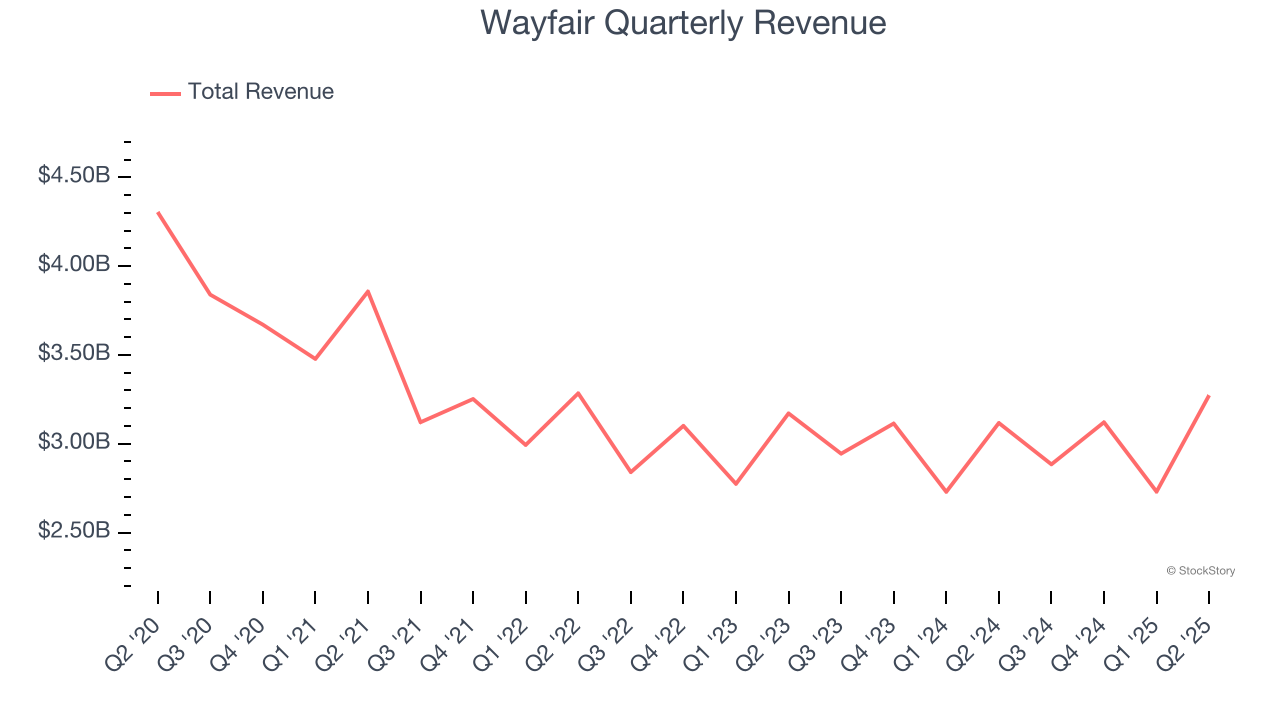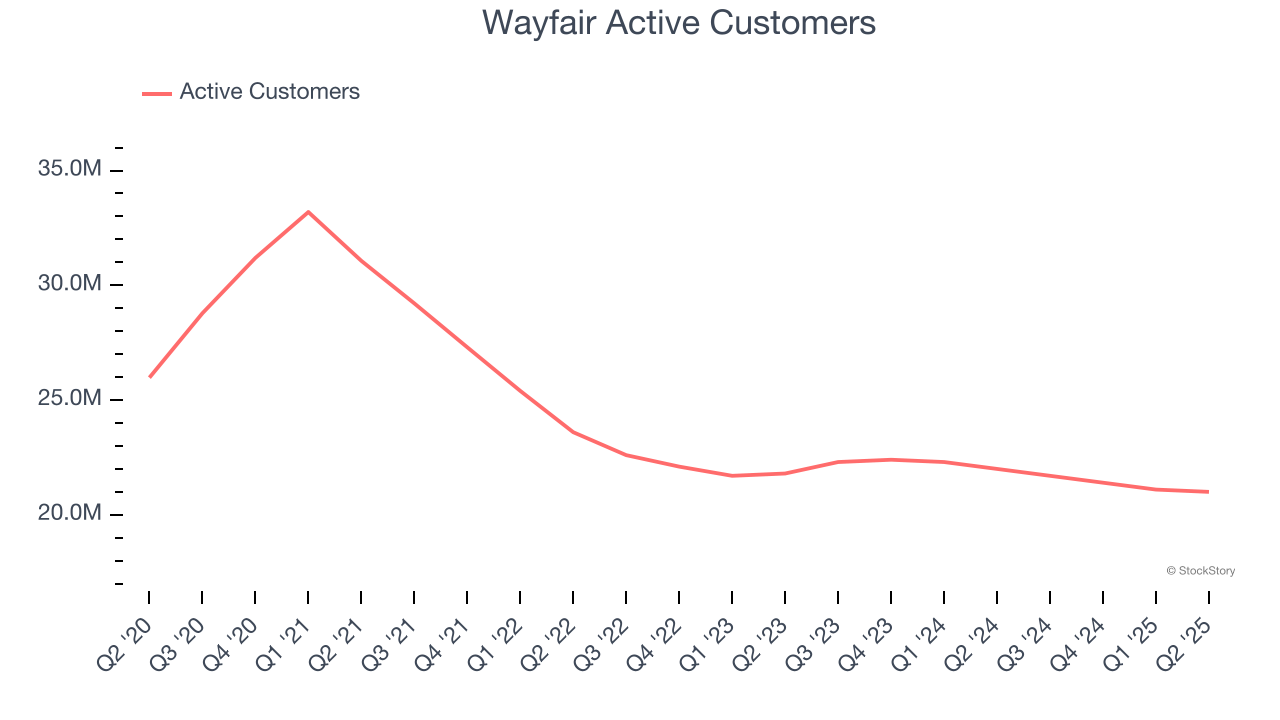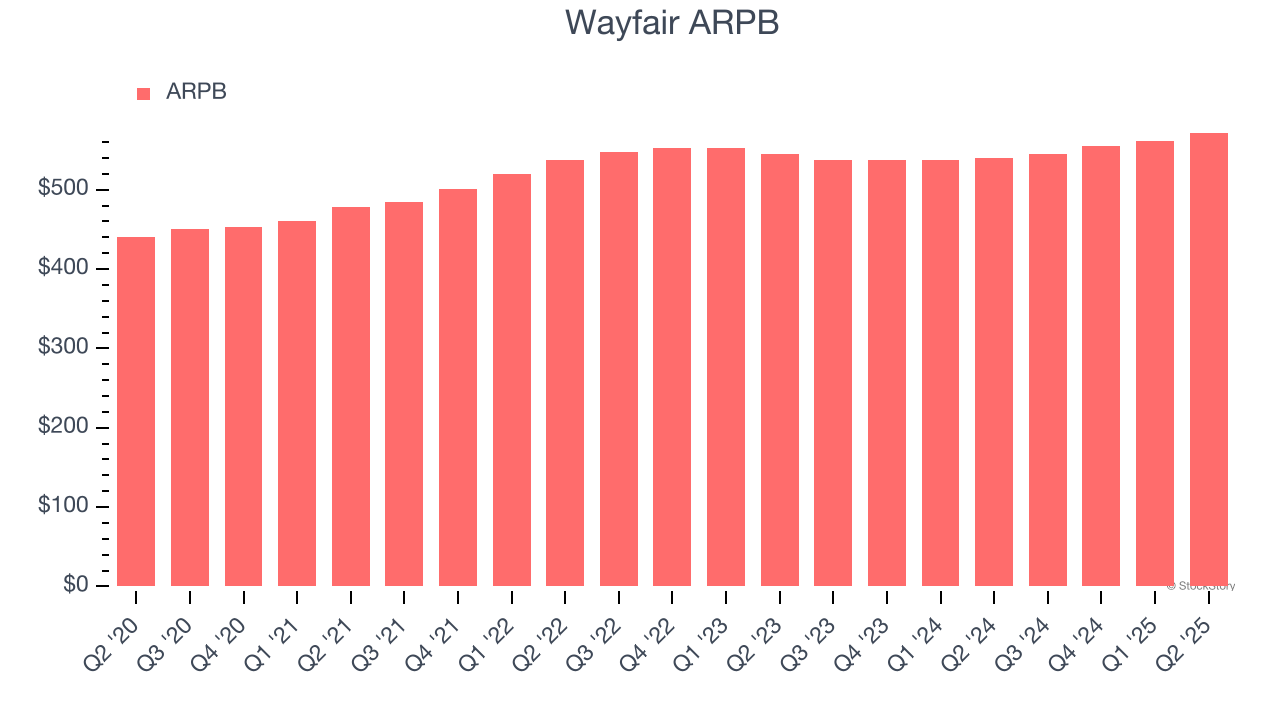
Online home goods retailer Wayfair (NYSE: W) beat Wall Street’s revenue expectations in Q2 CY2025, with sales up 5% year on year to $3.27 billion. Its non-GAAP profit of $0.87 per share was significantly above analysts’ consensus estimates.
Is now the time to buy Wayfair? Find out by accessing our full research report, it’s free.
Wayfair (W) Q2 CY2025 Highlights:
- Revenue: $3.27 billion vs analyst estimates of $3.12 billion (5% year-on-year growth, 4.8% beat)
- Adjusted EPS: $0.87 vs analyst estimates of $0.33 (significant beat)
- Adjusted EBITDA: $205 million vs analyst estimates of $147.6 million (6.3% margin, 38.9% beat)
- Operating Margin: 0.5%, up from -1.1% in the same quarter last year
- Free Cash Flow was $230 million, up from -$139 million in the previous quarter
- Active Customers: 21 million, down 1 million year on year
- Market Capitalization: $8.37 billion
"The second quarter was a resounding success, defined by accelerating sales and share gain, in tandem with expanding profitability. As we have discussed over the last few years, we can and will grow profitably, while taking significant share in the market. Year-over-year revenue growth of 6% - excluding the impact of Germany - marks the highest growth rate we have seen since early 2021. Our over 6% Adjusted EBITDA margin demonstrates the significant leverage in our model, and as previewed in our investor day two years ago, is just the beginning of what we believe we can achieve over time," said Niraj Shah, CEO, co-founder and co-chairman, Wayfair.
Company Overview
Founded in 2002 by Niraj Shah, Wayfair (NYSE: W) is a leading online retailer of mass-market home goods in the US, UK, Canada, and Germany.
Revenue Growth
Reviewing a company’s long-term sales performance reveals insights into its quality. Any business can experience short-term success, but top-performing ones enjoy sustained growth for years. Wayfair’s demand was weak over the last three years as its sales fell at a 1.7% annual rate. This wasn’t a great result and is a sign of poor business quality.

This quarter, Wayfair reported year-on-year revenue growth of 5%, and its $3.27 billion of revenue exceeded Wall Street’s estimates by 4.8%.
Looking ahead, sell-side analysts expect revenue to remain flat over the next 12 months. While this projection indicates its newer products and services will fuel better top-line performance, it is still below the sector average.
Today’s young investors won’t have read the timeless lessons in Gorilla Game: Picking Winners In High Technology because it was written more than 20 years ago when Microsoft and Apple were first establishing their supremacy. But if we apply the same principles, then enterprise software stocks leveraging their own generative AI capabilities may well be the Gorillas of the future. So, in that spirit, we are excited to present our Special Free Report on a profitable, fast-growing enterprise software stock that is already riding the automation wave and looking to catch the generative AI next.
Active Customers
Buyer Growth
As an online retailer, Wayfair generates revenue growth by expanding its number of users and the average order size in dollars.
Wayfair struggled with new customer acquisition over the last two years as its active customers have declined by 1.7% annually to 21 million in the latest quarter. This performance isn't ideal because internet usage is secular, meaning there are typically unaddressed market opportunities. If Wayfair wants to accelerate growth, it likely needs to enhance the appeal of its current offerings or innovate with new products. 
In Q2, Wayfair’s active customers once again decreased by 1 million, a 4.5% drop since last year. The quarterly print was lower than its two-year result, suggesting its new initiatives aren’t moving the needle for buyers yet.
Revenue Per Buyer
Average revenue per buyer (ARPB) is a critical metric to track because it measures how much customers spend per order.
Wayfair’s ARPB has been roughly flat over the last two years. This raises questions about its platform’s health when paired with its declining active customers. If Wayfair wants to increase its buyers, it must either develop new features or provide some existing ones for free. 
This quarter, Wayfair’s ARPB clocked in at $572. It grew by 5.9% year on year, faster than its active customers.
Key Takeaways from Wayfair’s Q2 Results
We were impressed by how significantly Wayfair blew past analysts’ EBITDA expectations this quarter. We were also happy its revenue outperformed Wall Street’s estimates. On the other hand, its number of active customers missed. Zooming out, we think this was still a solid quarter. The stock traded up 9.1% to $71.17 immediately following the results.
Should you buy the stock or not? What happened in the latest quarter matters, but not as much as longer-term business quality and valuation, when deciding whether to invest in this stock. We cover that in our actionable full research report which you can read here, it’s free.





